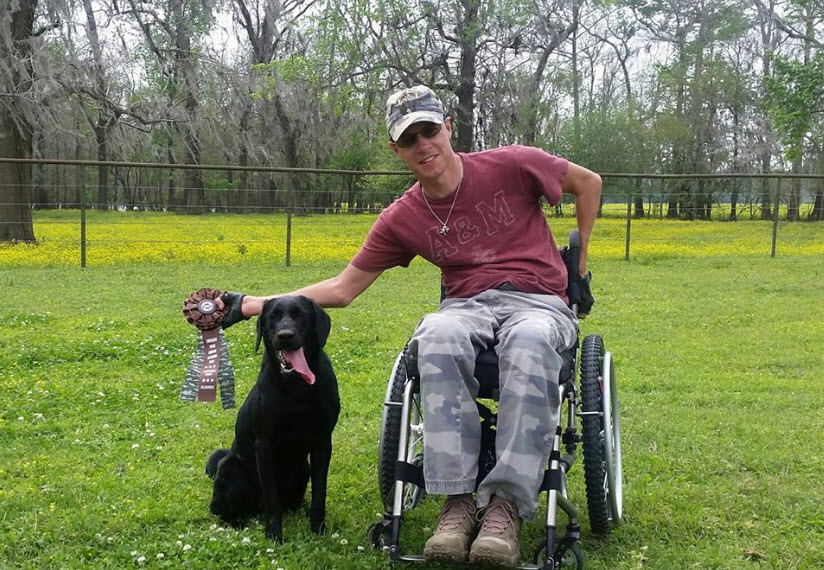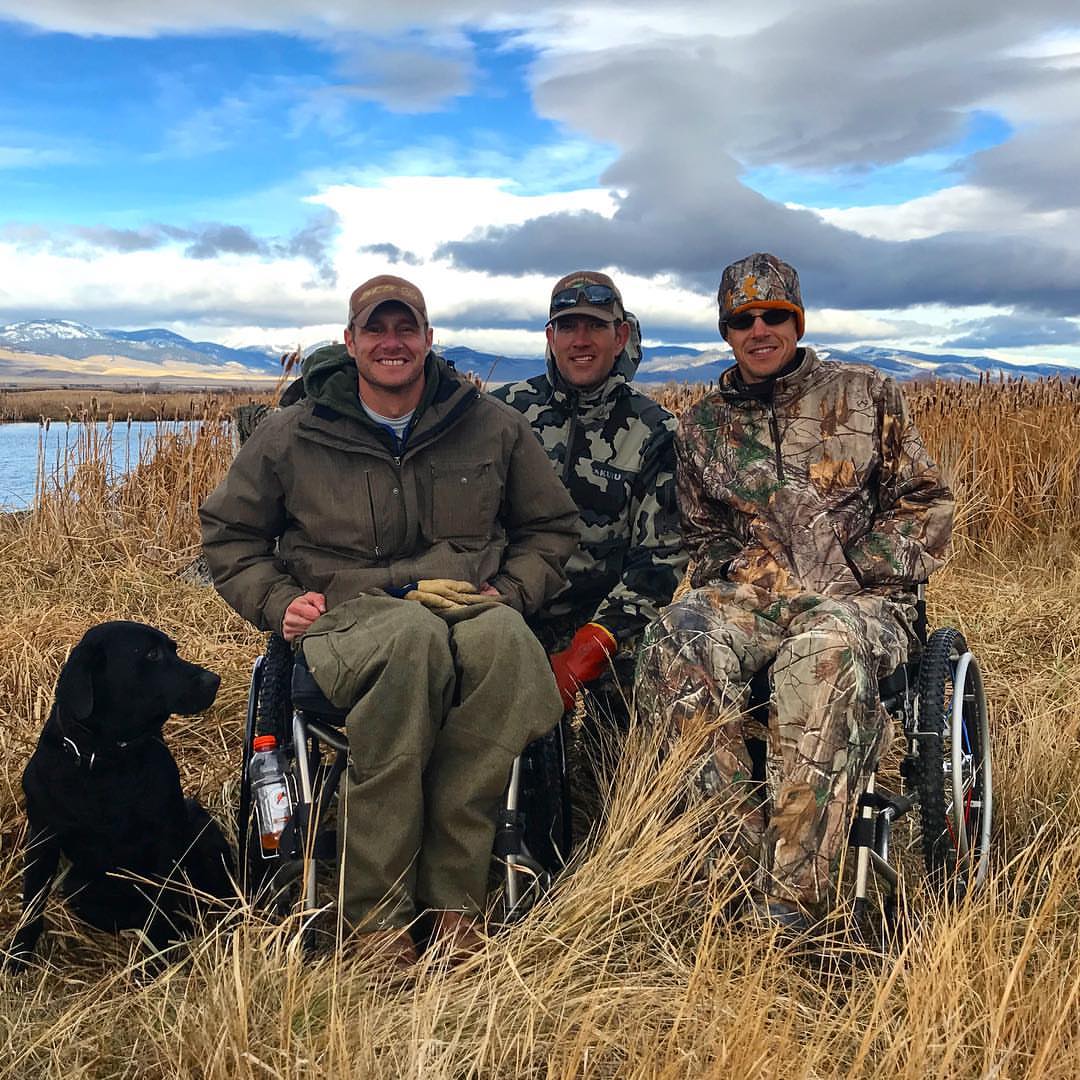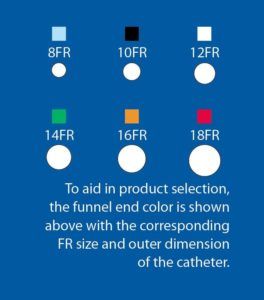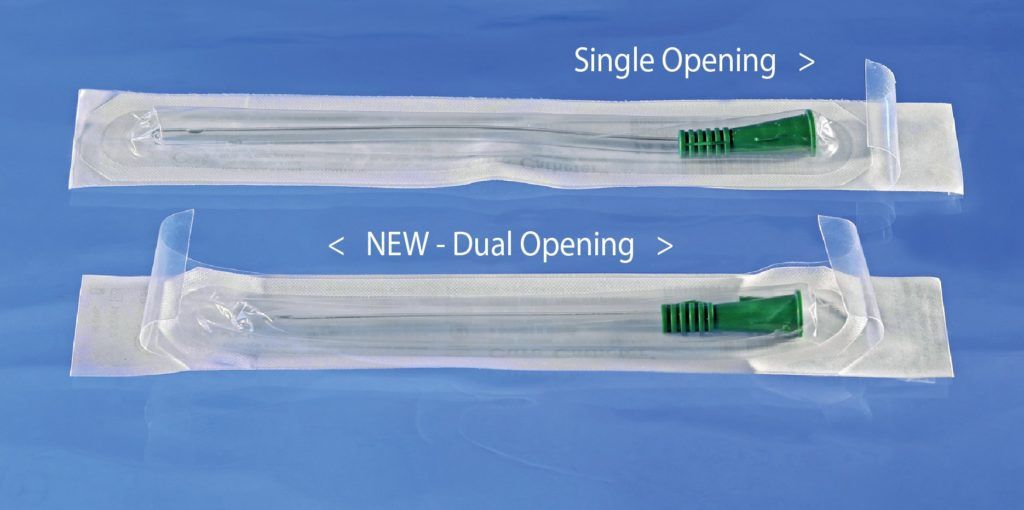 Below, we invite you to hear and share C7 quadriplegic Chad Waligura’s story as he discusses the pros and cons of Mitrofanoff surgery, along with what works best for him when self-cathing after this procedure. You may recognize Chad from his magazine, Able Outdoors, or his blogs for the CURE NATION.
Below, we invite you to hear and share C7 quadriplegic Chad Waligura’s story as he discusses the pros and cons of Mitrofanoff surgery, along with what works best for him when self-cathing after this procedure. You may recognize Chad from his magazine, Able Outdoors, or his blogs for the CURE NATION.
Chad is also a certified peer counselor and founding member of the TIRR Peers program at TIRR Memorial Herman Rehabilitation Program in Houston, TX. Note: Surgery is a big decision for anyone. Chad felt the Mitrofanoff procedure was his best option to maintain his independence and active lifestyle. However, Chad’s opinions are his own, and this article is not presented as medical advice. For informational use only — consult your physician with questions about Mitrofanoff surgery and whether it is right for you!
Note: Surgery is a big decision for anyone. Chad felt the Mitrofanoff procedure was his best option to maintain his independence and active lifestyle. However, Chad’s opinions are his own, and this article is not presented as medical advice. For informational use only — consult your physician with questions about Mitrofanoff surgery and whether it is right for you!
Chad Waligura Shares His Cathing Experience prior to Mitrofanoff Surgery
I’ve fielded so many questions about the Mitrofanoff procedure lately that I knew I’d have write about it as soon as I could. A lot of people seem to be in the same boat I was three years ago, looking for a way to make life better. Others are just curious, they’re happy with their current bladder management but are wanting to know what options are out there.
First a little background on me:
I’m a C-7 quad since 1986. Right after my injury, I began cathing (getting cathed) in the hospital and within a year had an SP (suprapubic) tube put in. I live an active life, travel as much as humanly possible and as a hobby keep up with everything going on in the disabled world.

You’ll often find Chad in a field, or a swamp, pursuing his love of the great outdoors!
Back when I had a bladder, I was one of the lucky few that had a spastic one, meaning I would void in between caths so I had to wear this external condom-style catheter thing all the time.
The downside of an external catheter is that not only do you have to duct-tape it on using what I can only describe as industrial strength sticky glue, but somehow it still always seemed to leak.
Being a new quad and not having much hand function, it didn’t take long to see that cathing in this manner wasn’t going to work with my lifestyle. The best alternative at the time was a suprapubic tube. It’s still one of the best options for people with SCI who have limited hand dexterity, but after long-term use, SP tubes can become hard to live with. At least, that was the case for me.

With his outgoing personality and years of perspective after SCI, Chad loves introducing fellow wheelchair users to the outdoors.
Chad Discovers the Mitrofanoff Procedure
I first heard the word “Mitrofanoff” about 5 years ago. I didn’t really pay much attention to it at the time, though I should’ve, because I suppose I wasn’t mentally ready yet.
For decades, I’d been living with bladder spasms, dysreflexia and UTIs that were becoming progressively worse. When these issues worsen slowly over a long time period, you just don’t realize how bad it’s gotten.
Remembering that Mitrofanoff had something to do with the bladder, I eventually began looking into it. Specifically, my self-education process began after I was released from the hospital following my second UTI that required IV antibiotics. I knew then I needed to make a change.
Years of taking oral meds had produced resistant bacteria in my body, and I wasn’t going to spend the rest of my life ping-ponging between ER visits, IVs and hospital stays.

Like most people, Chad would much rather spend his time anywhere else other than the hospital. You’ll catch him most days working with his champion hunting dog, Vegas.
Luckily, I knew someone who had had it done that I could call and ask everything I wanted to know. The more people I found that had the Mitrofanoff procedure, the more I kept hearing the same answer. They all told me, “It’s a tough recovery but it’s the best thing I ever did.”
Chad Begins his Mitrofanoff surgery Process
Over time, my bladder had shrunk to the size of a golf ball. Infections were happening more frequently and were more painful which meant higher fevers and hospital stays. The first one required a PICC line and a month’s worth of infusions to get rid of. That was fun.
Bladder spasms and cold sweats, and my favorite thing of all… wetting my pants. It all had become too much a part of my life.
And the cherry on top of all this?
I was told by a healthcare professional that the longer you have an SP tube, the higher risk you have of getting bladder cancer. Everything seemed to be pointing toward the obvious decision… Mitrofanoff.
“It wasn’t just one thing but a whole bunch of things over a long time that lead me to the decision to get the Mitrofanoff surgery, and by long period, I mean 30 years. It’s not something you do on a whim,” Chad explains.

Chad realized that in order to maintain his active lifestyle, it was time to make some changes to his self-cathing routine.
The Ups and Downs of Chad’s Mitrofanoff Surgery
There are two versions of this procedure. The first is where they augment your existing bladder with a section of intestine. In the other, the entire bladder is removed and a new one (called an Indiana pouch) created from the section where the small and large intestine meet.
I chose option two.
For one thing, my bladder was too small to use, and more importantly, I’d talked to a couple of people who still had some leakage after having their bladder augmented and I didn’t want any chance of that happening.
After surgery I spent seven days in the hospital, the first six of which I couldn’t eat. That sounds bad I know, but to be honest, I didn’t really feel hungry until the fifth day.
I had four tubes coming out of my abdomen, including a blood/fluid drain, a stomach drain, one in the newly created stoma next to my belly button and an emergency drain in the Indiana pouch. On day two, I got up for a little while in my chair and every day after that, I got up for longer and longer. The blood drain was taken out before I went home and three weeks later, they were all out and I began cathing on my own every four hours. From then on, I was home free.

Home-free for Chad means having more time to cheer on the home team — his beloved Texas A&M Aggies.
Since the Mitrofanoff procedure also involves removal of intestine, a lot of people — myself included — worry about bowel function post-surgery. In all my research, everyone I talked to said it returned to normal fairly quickly, and luckily mine did the same after only a week. (That was two years ago, and I haven’t had any bowel issues since shortly after the procedure.)
CHAD CHOOSES A CURE CATHETER FOR DAILY CATHING
 The day I cathed for the first time in my doctor’s office after having the Mitrofanoff procedure, they sent me home with about 10 different catheters to try.
The day I cathed for the first time in my doctor’s office after having the Mitrofanoff procedure, they sent me home with about 10 different catheters to try.
There were several brands to choose from, all sized 14 French, with varying means of lube and different shaped tips.
After a month of trials, I settled on the Cure Medical 16 French straight catheter. As a quad, I felt it was the easiest for me to use and the 16 French size drained faster than the smaller 14FRs.
My Indiana pouch holds approximately 1200 ccs and today, I self-cath every 6-8 hours.
 To request free samples of the Cure Catheter® or any Cure Medical catheter, contact your local distributor of quality healthcare products, or click here.
To request free samples of the Cure Catheter® or any Cure Medical catheter, contact your local distributor of quality healthcare products, or click here.
Bonus Tip: Since my new bladder is made entirely from intestine, it produces a small amount of mucous that needs to come out when I self-cath.
The larger eyelets on the 16 French Cure Catheter help drain the mucous without having to irrigate every day or using a syringe to pull it out. I do order small bottles of sterile saline that help me irrigate about once a week, and I use a new bottle each time.
CHAD’S FINAL THOUGHTS ON MITROFANOFF SURGERY
All in all, I believe I made the right choice for my individual needs. The benefits have included:
- no more bladder spasms or pain or dysreflexia or cold sweats;
- more freedom to get in and out of bed on my own (with an SP tube I needed help to switch from my leg bag to a bed bag every night and vice/versa in the morning);
- cathing is easy since all I have to do is pull up my shirt;
- dressing is easier;
- infections are less frequent (only one UTI in 2 years so far); and
- my favorite perk of all, besides no pain of course, is no more wet pants! (You have to be paralyzed to appreciate that one.)
 The real question now is would I have had this surgery done 30 years ago? If I knew what know now, yes! Of course. But it wasn’t being done then and at 17 years old, I wouldn’t have had the perspective or emotional maturity to have my bladder removed. You have to be ready for this one.
The real question now is would I have had this surgery done 30 years ago? If I knew what know now, yes! Of course. But it wasn’t being done then and at 17 years old, I wouldn’t have had the perspective or emotional maturity to have my bladder removed. You have to be ready for this one.
Thank you, Chad, for Choosing a Cure!
Follow Chad Waligura on social media — connect with him here.
Enjoy Our Free Resources & Articles
CURE NATION is designed with you in mind, to offer assistance and education when you need it through a personal support program.
All of the information you find below and on our related social media pages is meant to guide you to places, topics and resources that enhance your life, while also connecting you with a growing group of friends.
- Sign up for our free, CURE NATION e-newsletter to have our latest stories delivered directly to you, once a month.
- Get our FREE LIFESTYLE + ACCESSIBLE TRAVEL BOOKS here.
- Meet us in person at a CURE NATION event.
- Have an idea you’d like to share? Let us know.
- Be sure to take minute to meet our Cure Advocates too.
You may also enjoy:
I Would Never Go Back: Anthony Sanchez
Visit these Spina Bifida Summer Camps for Kids
Why Bob Yant Strives To Find A Cure For Those With Spinal Cord Injuries
Meet Us in Houston for the Abilities Expo!
Champion Prize Fighter Gary "Tiger" Balletto Battles Now to Help SCI Survivors Like Him
Redefining Spinal Cord Regeneration Research with Dr. Oswald Steward
Wheels UP! Meet Women Who Explore the World on Wheels
Karen Roy's Story of Triumph Over Tragedy Plus Her European Adventure

